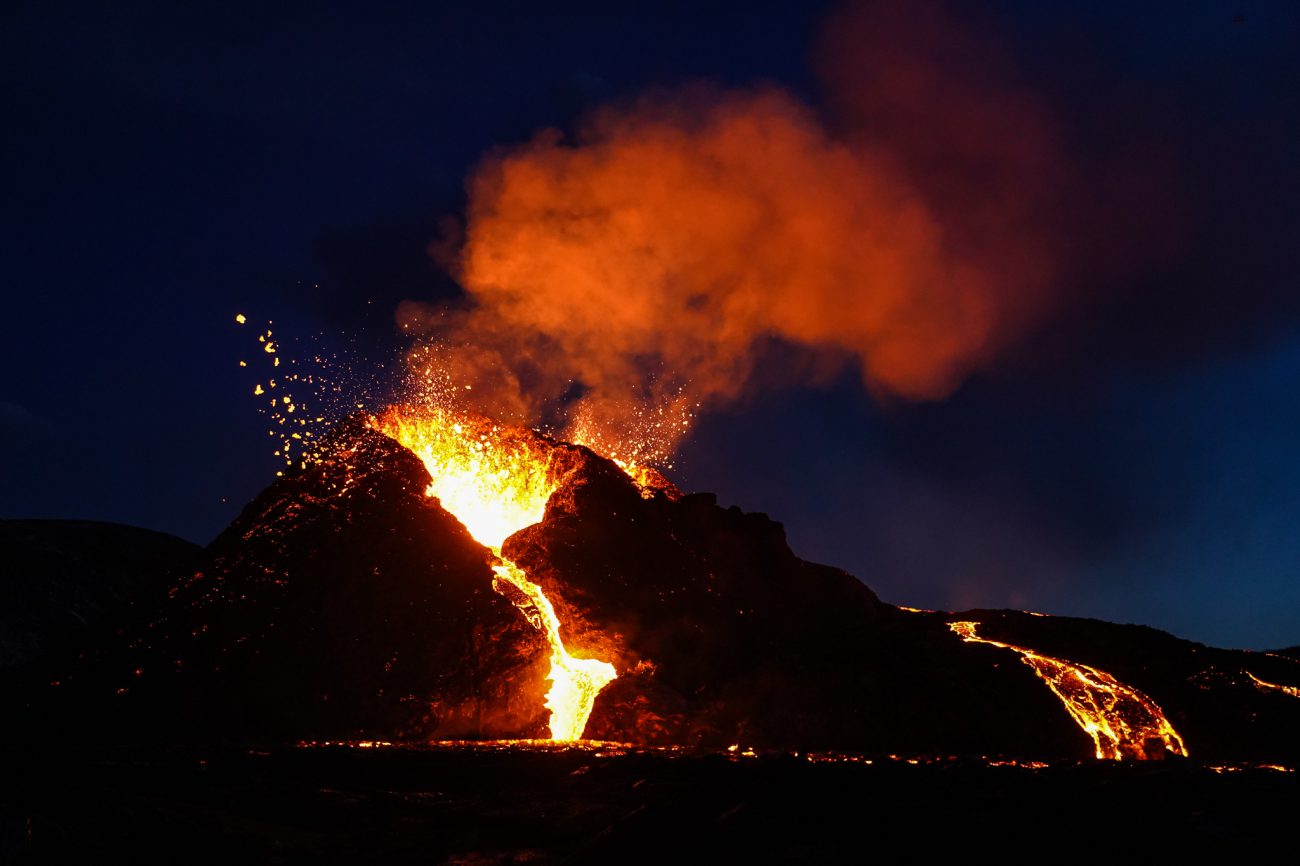Nele Mahnke experienced the legendary volcanic eruption in Iceland's south in 2021
Fagradalsfjall - Iceland's spectacular volcanic eruption in 2021 and 2022
For 800 years, there had been no volcanic eruption on the Icelandic peninsula of Reykjanesskagi. Until two years ago, on the evening of March 19, 2021, a fissure volcano caused the earth to erupt, captivating thousands of people in the weeks that followed.
Fagradalsfjall is the name of the volcanic mountain and the surrounding volcanic system, which lies only 40 kilometers from the capital. The name is made up of the Icelandic words fagur (“beautiful”), dalur (“valley”) and fjall (“mountain”) and is named after the valley Fagridalur (“beautiful valley”) located in the northwestern part of the massif.
A strong earthquake made the beginning and even caused minor damage to buildings on February 24, 2021. From that point on, it was only three weeks until the first volcanic eruption south of Fagradalsfjall in the Geldingadalir. More than 40,000 earthquakes were measured during this period. 180 meters long was the fissure volcano when the earth erupted for the first time and from which lava flowed without explosions. There was also no ash plume, so there was no danger to residents. The eruption was called a “tourist eruption”, a term Icelanders usually use for smaller eruptions that are easily accessible. Normally, the first thing people think of when a volcano erupts is distance and safety. But in Iceland, the “usual” reaction is the opposite. So Icelanders and tourists flocked to the eruption site to watch the natural spectacle. I even watched people fry sausages on the superficially cooled lava.In April 2021, many more fissures opened until only one fissure was active on May 2. On that day, the eruption changed dramatically: the lava, which had been flowing continuously, was now ejected into the air, similar to the water of the Geysir. Several hundred meters high these lava fountains were estimated and were visible as far as Reykjavík. In mid-September, all activity of the volcano ceased.
It was not until August 3, 2022, that a fissure about 300 meters long, formed at the beginning of the eruption, opened again and from which the lava gushed in fountains without stopping. Since August 21, 2022, the volcano has been dormant and there are no signs of another eruption.
If you are planning a trip to Iceland and like hiking, you should still take the chance to see the fascinating crater and newly formed landscape. In the attached links there are descriptions of the rather demanding tour (about 17km there and back). You will be rewarded with an impressive sight, even without flowing lava, which shows you the natural power of Iceland.
If you can’t wait until the next “tourist volcano eruption”, you can marvel at real lava in the “Lava Center”. At two locations, in Reykjavík and near Vík, the “Lava Center” offers a show in which they let 100-year-old reheated lava from the eruption of Katla flow into the room.
Meanwhile, there is continuous rumbling beneath Iceland, the land that sits directly on the Mid-Atlantic Ridge, with new volcanic eruptions always expected. For example, the crater lake above the Askja volcano is currently rapidly melting, and volcano expert Ármann Höskuldsson of the University of Iceland estimates that there could be an eruption in the next two to three years.
Info and maps for visiting Fagradalsfjall:
https://www.visitreykjanes.is/en/volcano-eruption/eruption-information/hiking-and-parking
For the curious: Interactive catalog with map of Iceland’s volcanoes:
https://icelandicvolcanos.is/
Thank you, dear Nele, for your report and the insights!
Images & Text: Nele Mahnke
Nele’s Instagram
A land of fire and ice, with more sheep than inhabitants, characterized by a unique nature! This is just a brief description of such a diverse country. While a volcano may erupt on one side of the country, you can hike a glacier, admire the Northern Lights, or take a bath in a hot spring on the other side of the country - at the same time.
This not only speaks for diversity, but also for spontaneity, which is also reflected in the changeable weather in Iceland. A popular Icelandic saying is "If you do not like the current weather, just wait for five minutes".
In contrast to this inconsistency, one thing is constant and that is the enthusiasm for Icelandic horses! The Vikings brought horses to the island in the 9th century.
To find out more about Iceland, you can find travelogues, reports, or interesting facts here in the UNDRA Journal!






